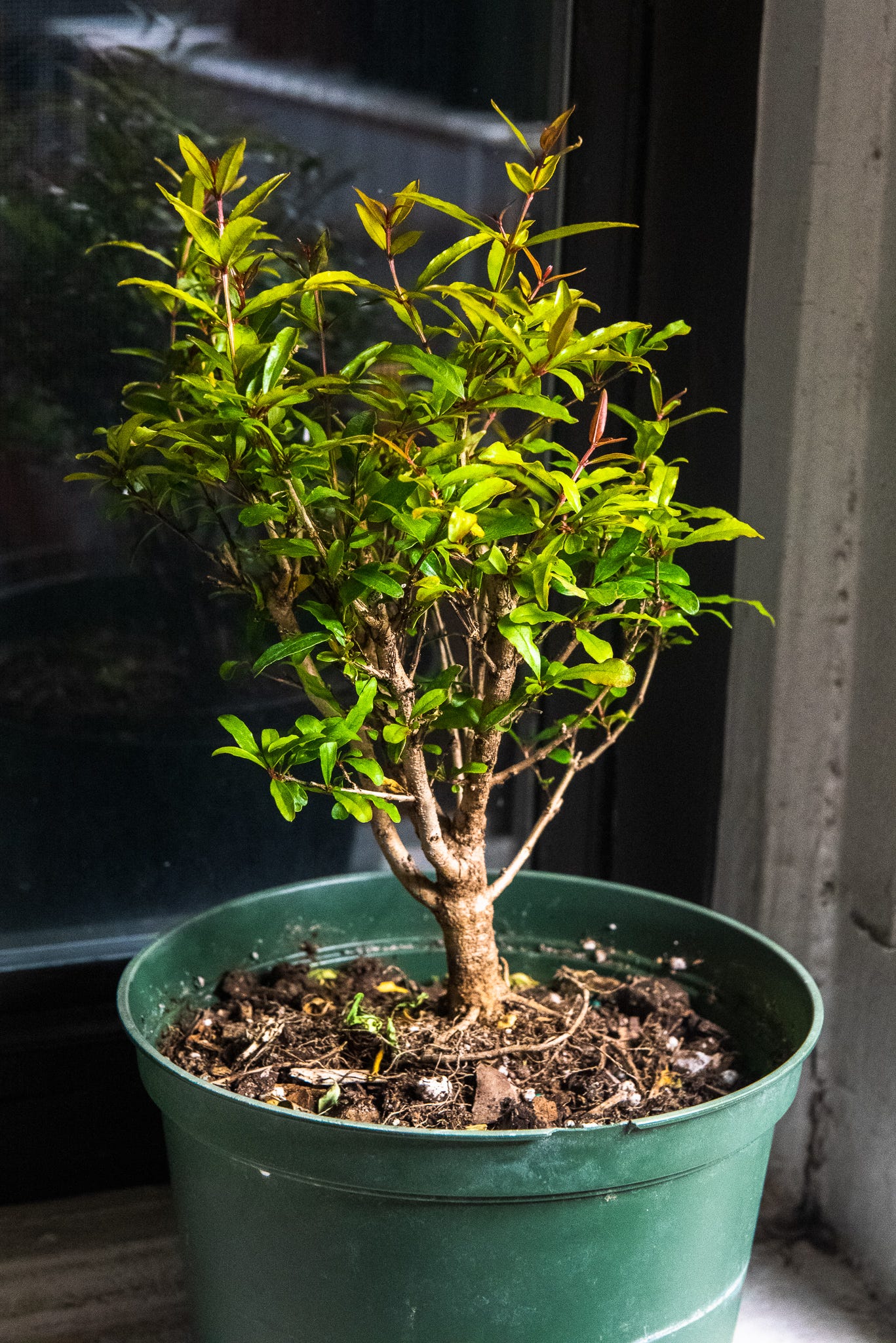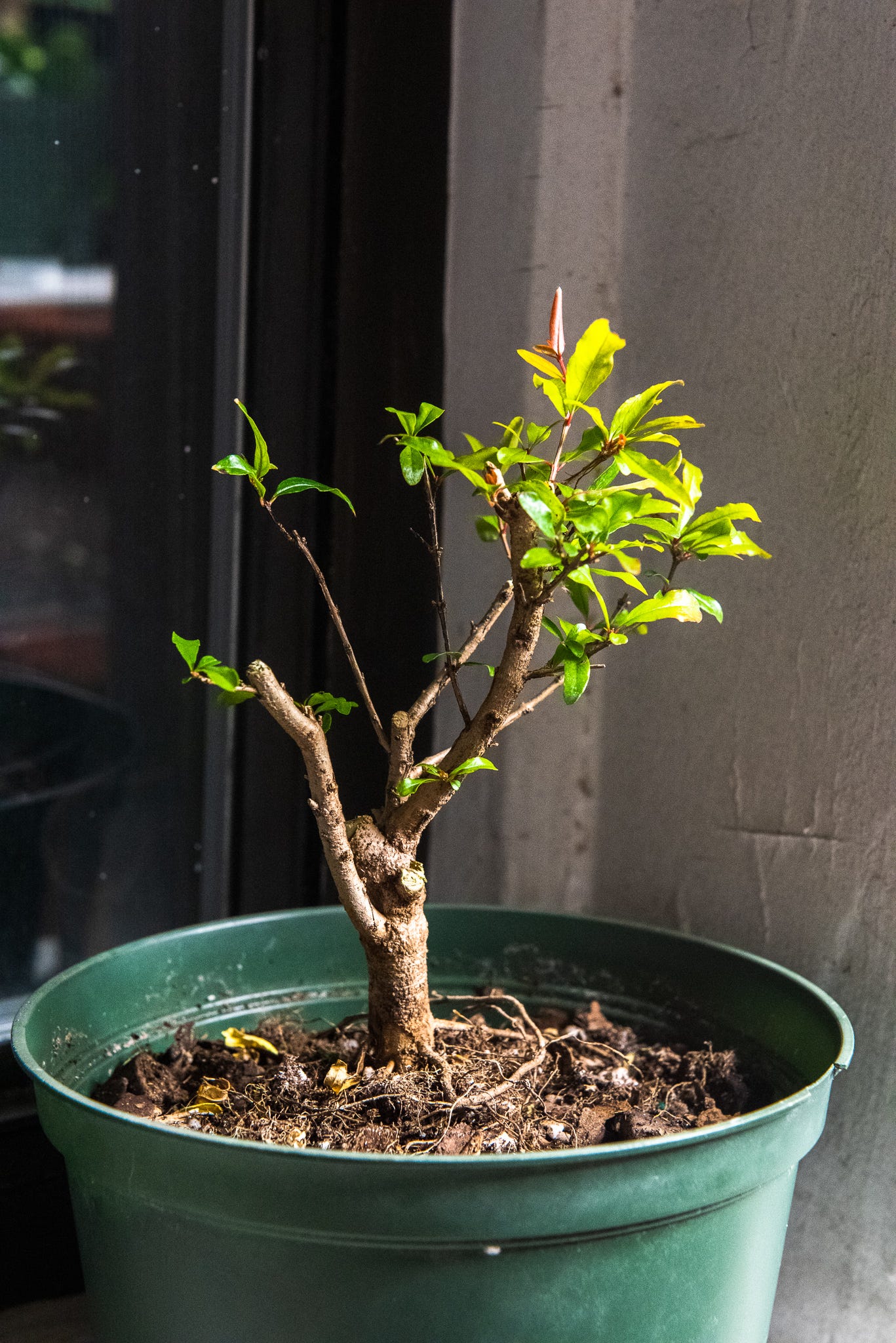February just began, but it already feels like the start of spring. It’s unlikely we’ll get snow again in Queens. Two weeks ago at the botanical garden, I couldn’t ignore all the flower buds beginning to pop. New York City’s last frost date—the average final day of the season with temperatures at or below freezing—is April 5th, says the Farmer’s Almanac. We’ll see how 2022 compares.
The end of frost is one of the environmental cues that trees take to awaken from dormancy. I’ve been tallying which of my trees will need repotting this year, a stressful process for a tree best done when it begins to push new buds. I also have logistical questions. Should I give my big dawn redwood time off to recover from last summer’s fungal issues, or do I forge ahead and work its roots to fit a smaller pot, which would allow me to bring it back from my dad’s house in the suburbs to the restaurant where my city trees now live? I have a new olive waiting to be styled; every morning I check the bud growth to see if it’s sufficiently awakened from its winter rest. My plan is to sever the tree into two, creating a broken-trunk pre bonsai from the base and rooting the top section into a tiny clump. Olives are supposed to root well from bare stumps. I’m reading up and inspecting branch junctions to determine the best spot to make the cut.
I decided to make these pomegranates my first styled trees of the year. I’ve wanted a pomegranate for a while; they’re known for gnarled trunks and contorted branches, a kind of grotesque desert beauty. And of course they produce pomegranates, one of my favorite fruits, as well as funny bell-shaped flowers.
This pair of trees came from a private seller on Facebook. They’re small and not that special. To be honest I overpaid for them. But I need more practice trees, and there’s some potential in these pre bonsai. The sword-like leaves have a beautiful red blush and there are lots of branches to work with. As they spent the winter in Texas they didn’t go through much of a dormancy period, so now’s as good a time as any to start.
I went hard on this tree, removing 90% of the foliage. I’m envisioning a bent and broken literati design with this one downward-pointing branch acting as the new trunk for a larger tree that lost its crown. Eventually I want to create two or three levels of foliage with the end of the branch reaching toward the viewer. The backward pointing branch will get removed and the tall one pointing skyward will get cut back hard once the tree recovers.
That’s the plan, anyway. The tree appears awkward at this stage and may never look right. Yes, bonsai is a process, but styling should point a way towards a design. With my current skills, there’s a disconnect between my vision for a tree—or rather, my idea of a vision for a tree, as I’m not at present a visual thinker—and what I’m able to accomplish with shears and wire. My wiring has improved, so there’s that. And the root knuckle at the nebari is easier to see now.
Practice tree, Max! Practice tree!
Ironically, the tree I was less excited about at the start turned out better, I think—possibly because I didn’t have a clear design and I just cut back to expose the major branches. Leaving a tiny bit of growth on each branch should keep them alive while dormant interior buds pop to form new secondary branches; one has already started. Those branches may point me to a way forward.
I’m trying to get more comfortable with awkward trees that don’t have a clear path ahead. It took me months of staring at one of my boxwoods before a design began to form. Each time I thought I pruned back enough, I realized a week later that I needed to remove more.
Will my ego survive the blow of a come-what-may tree outpacing one styled with a deliberate design? I’ll let you know in a few months.
Tree reading
A 130-year-old magnolia in Brooklyn is the city’s only living historical landmark. [Tiktok]
Read about the life and work of Hattie Carthan, an environmentalist called the Tree Lady of Brooklyn, who saved the magnolia in the 1960s and rallied her neighbors to plant 1,500 trees across the borough. [Brooklyn Public Library]





